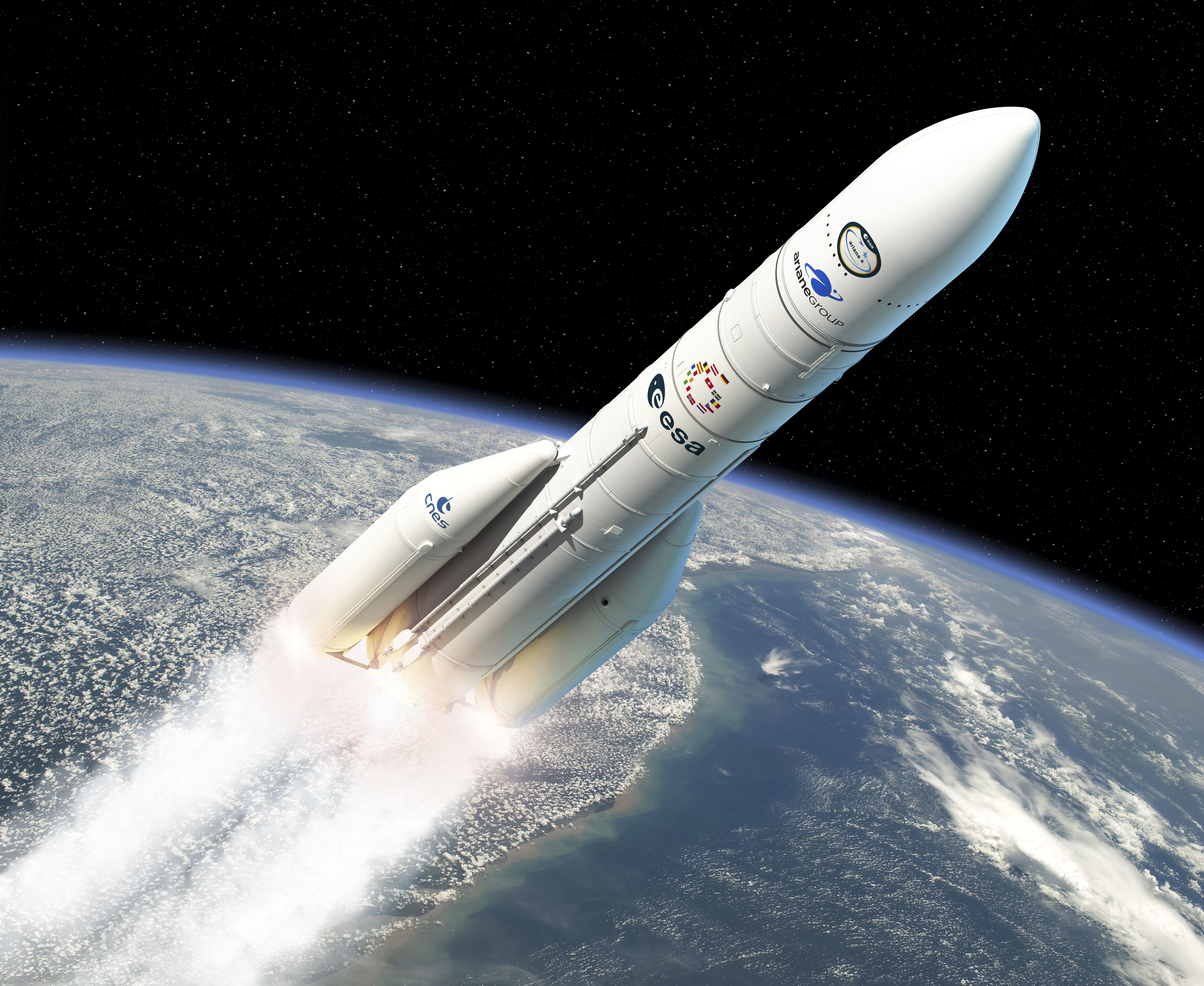Introducing Ariane 6, ESA’s powerful new rocket
Three… two… one… lift-off! Rockets are very important as they are the only means we have of transporting things like satellites from Earth to space. Although we have been using rockets for decades, the science and technology of them continues to improve, and now ESA has a new type of rocket: the Ariane 6!

An Ariane 6 test rocket on the launchpad, along with the team that helped make these incredible machines a reality! Credit: ESA/CNES/Arianespace/ArianeGroup/Optique vidéo du CSG.
Ariane 6 rockets are complex pieces of technology, standing at over 60 metres tall – the height of about 15.5 elephants stacked on top of one another. The bottom part is called the main stage, which is powered by a liquid-fuelled engine called Vulcain 2.1. The Vulcain 2.1 engine and the solid rocket boosters on the side of the main stage are what first blast the rocket off the ground, and create the fire and loud whooooosh! sound we think of when imagining a rocket launch!
Next comes the upper stage, which has a special engine called Vinci that can be used multiple times, meaning that an Ariane 6 can reach different orbits during a single mission. The top, cone-shaped part of the rocket is called the fairing. This is where the rocket’s cargo – called the payload – is stored. The fairing protects payloads during the journey into space, and eventually splits into two before the payload needs to be released.

³Cat-4 and ISTSat-1 student teams with ESA's Fly Your Satellite! coordinators and Exolaunch representatives. Credits: Exolaunch
Ariane 6 rockets come in two varieties. The first is called Ariane 62. This has two boosters, and can lift 10.3 tonnes into Low Earth Orbit (which is where many satellites, and the International Space Station, are). If even more power is needed then the second variety, called Ariane 64, can be used. This has four boosters, and can lift more than twice as much as an Ariane 62! Both rockets can carry payloads even further out into space if that is what the mission requires.
The first Ariane 6 launch is scheduled for 9 July 2024. It will carry 16 experiments and small satellites into orbit, including two CubeSat mini-satellites designed and built by university students as part of ESA Education’s Fly Your Satellite! programme. The first of these is called 3Cat-4 (pronounced “cube cat four”) from the Universitat Politècnica de Catalunya in Spain. It carries several experiments to measure important climate variables, including one for measuring soil moisture and salt levels in the oceans. The second is called ISTSat-1, and is from the University of Lisbon in Portugal. Despite its small size, ISTSat-1 is equipped to support the surveillance of aircraft as they fly around the world.
Would you like to design a special satellite to be launched on an Ariane 6 rocket? What would its mission be?
Cool fact: Ariane 6 rockets are launched from Europe’s Spaceport in French Guiana. This is just 5° north of the equator, meaning launches to the east gain a big boost from the Earth's rotation!
Last modified 03 July 2024





